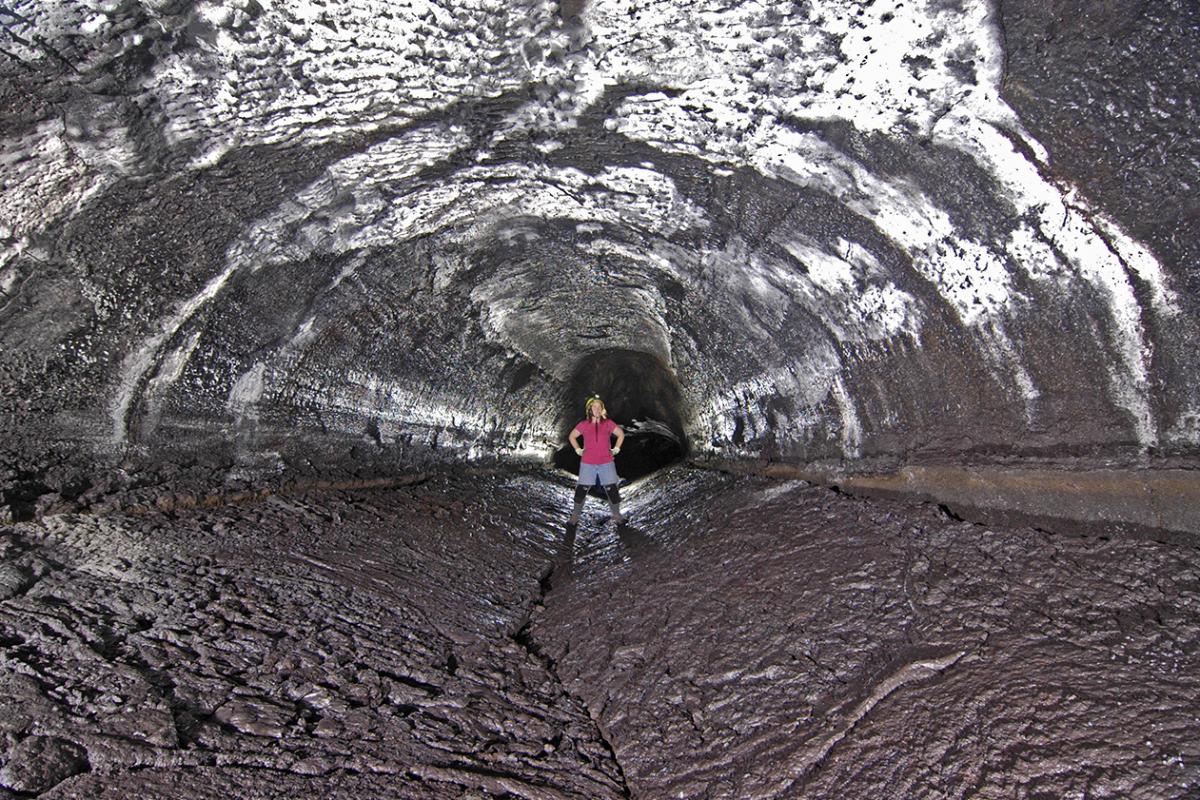D: I’ve really been enjoying my new hobby, Yaël: caving! You should join me.
Y: Thanks for the invite, Don, but I’m claustrophobic. Where are you caving next?
D: I’m off to Hawaii, where I’ll crawl through Kazumura. That’s a lava cave over forty miles long, the largest in the world!
Y: You know what you’re getting yourself into, right? When a volcano erupts, it sends lava rivers rushing downhill. As these rivers flow, their sides and surfaces crust over, forming a tunnel. You could think of them as very deadly waterslides, or lava slides, in this case.
D: That’s not the only way the caves form. Kazumura was created by a process called inflation. That’s where a sheet of lava flows, hardens, and becomes buoyant. It acts as a roof to the next sheet of lava, which eventually flows out from beneath the first sheet and hardens, too. Like shingles laid over one another, each sheet of lava adds a layer to the roof as more lava flows beneath.
Y: No matter how the caves form, you’re lucky the lava has drained out before you walk through them! Some caves are as large as subway tunnels, and some are too small for a person to crawl through. What if you get lost? Kazumura is mostly just one long, big tunnel. But other lava cave systems are more complex. The flowing lava, like a river delta, can branch. And later lava flows can cause caves to collapse. If you don’t follow a map, you’ll get trapped in an underground maze.
D: It’s just this complexity that’s so fascinating. Lava caves are hidden worlds just beneath our feet.









